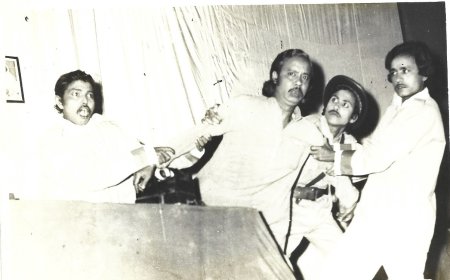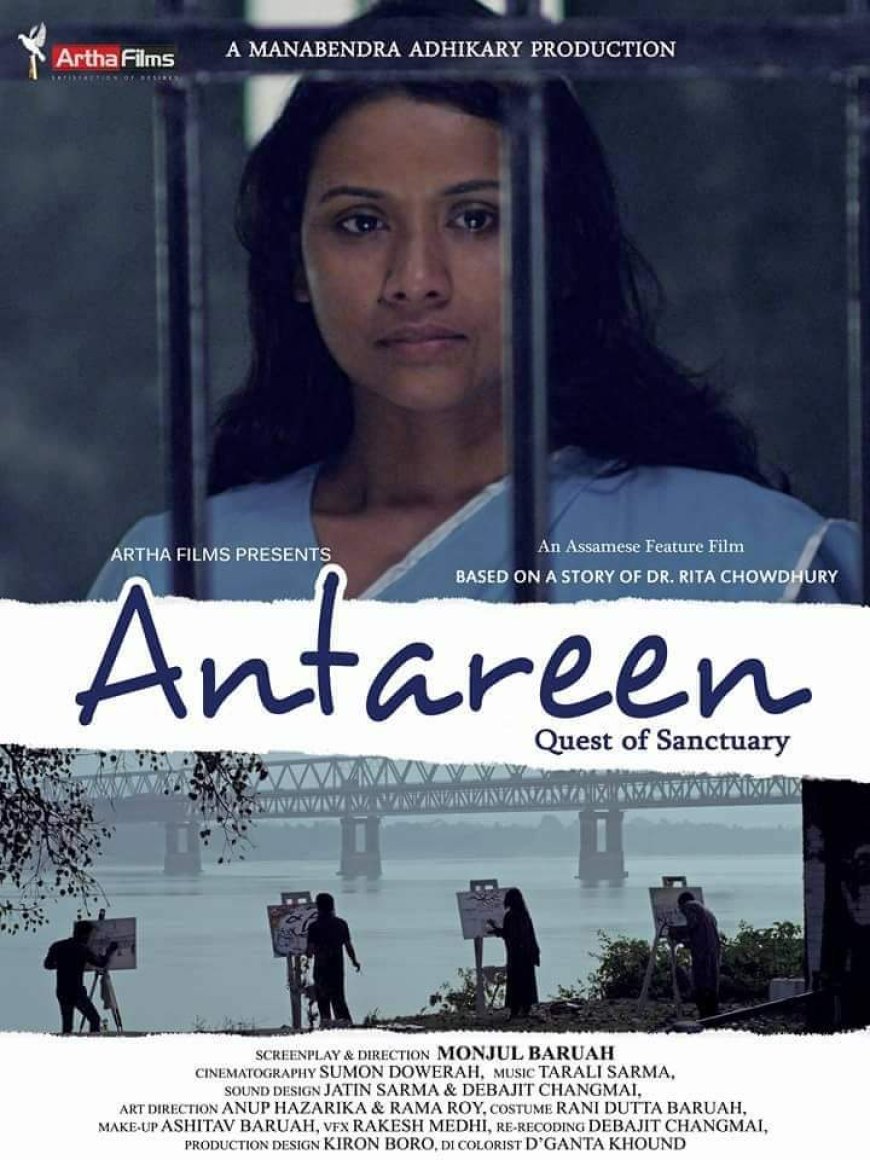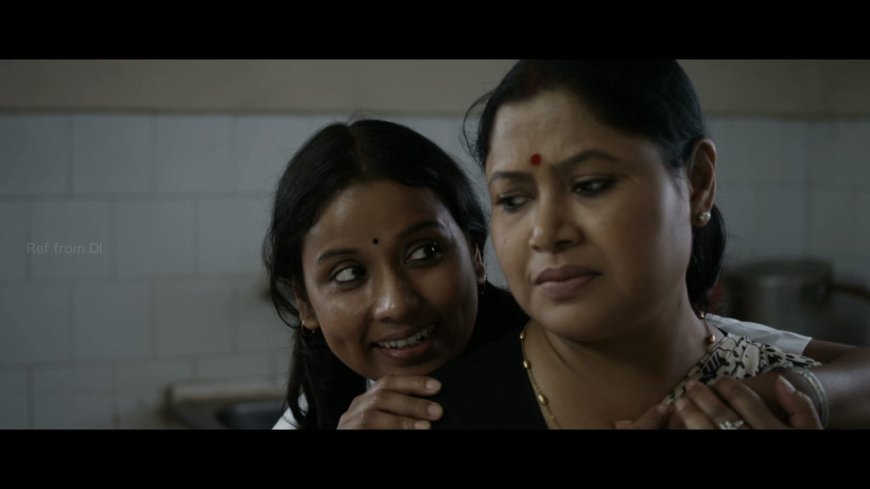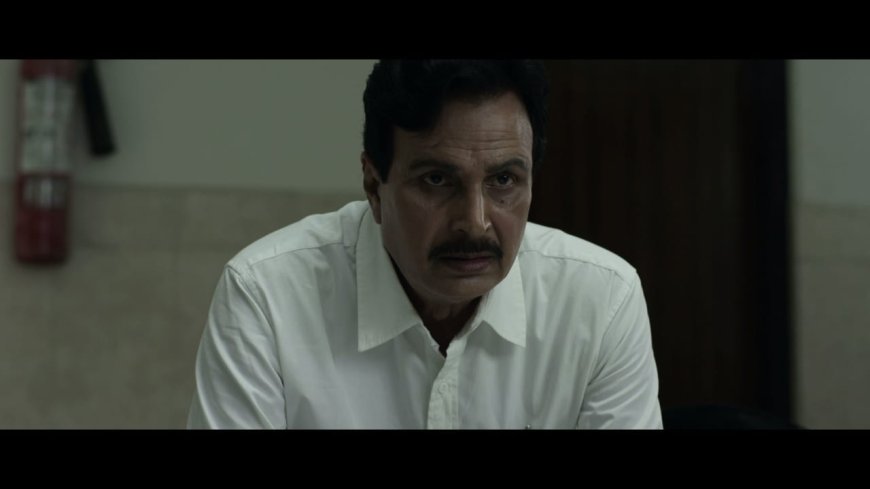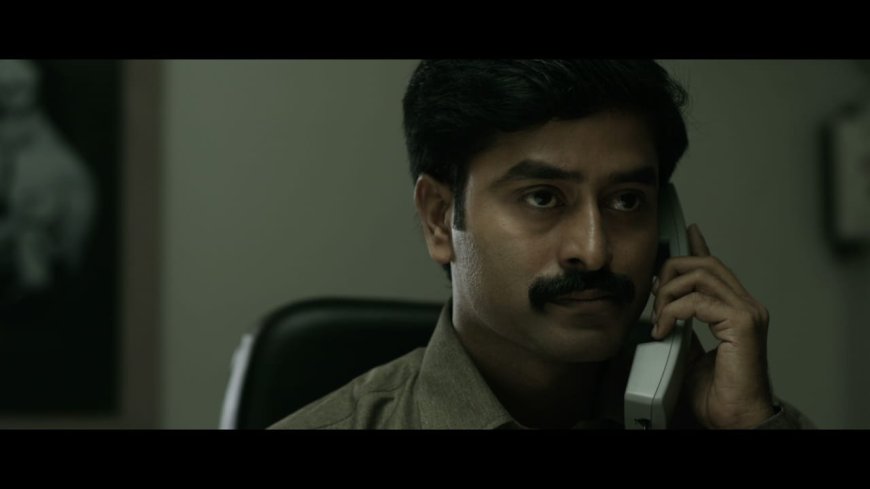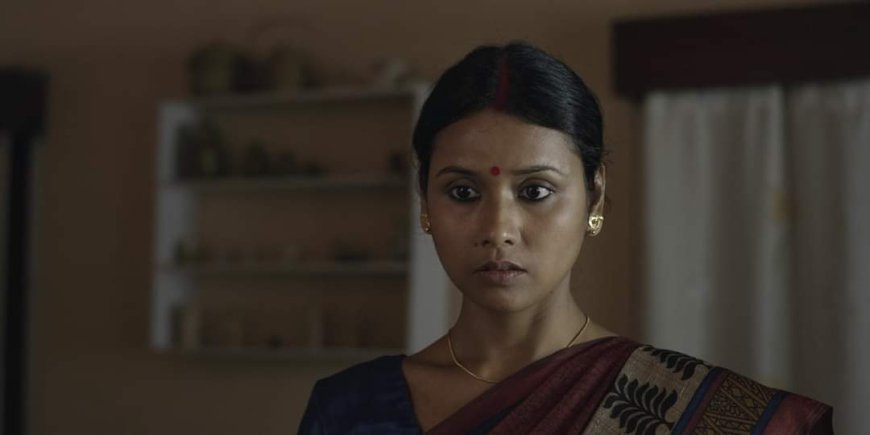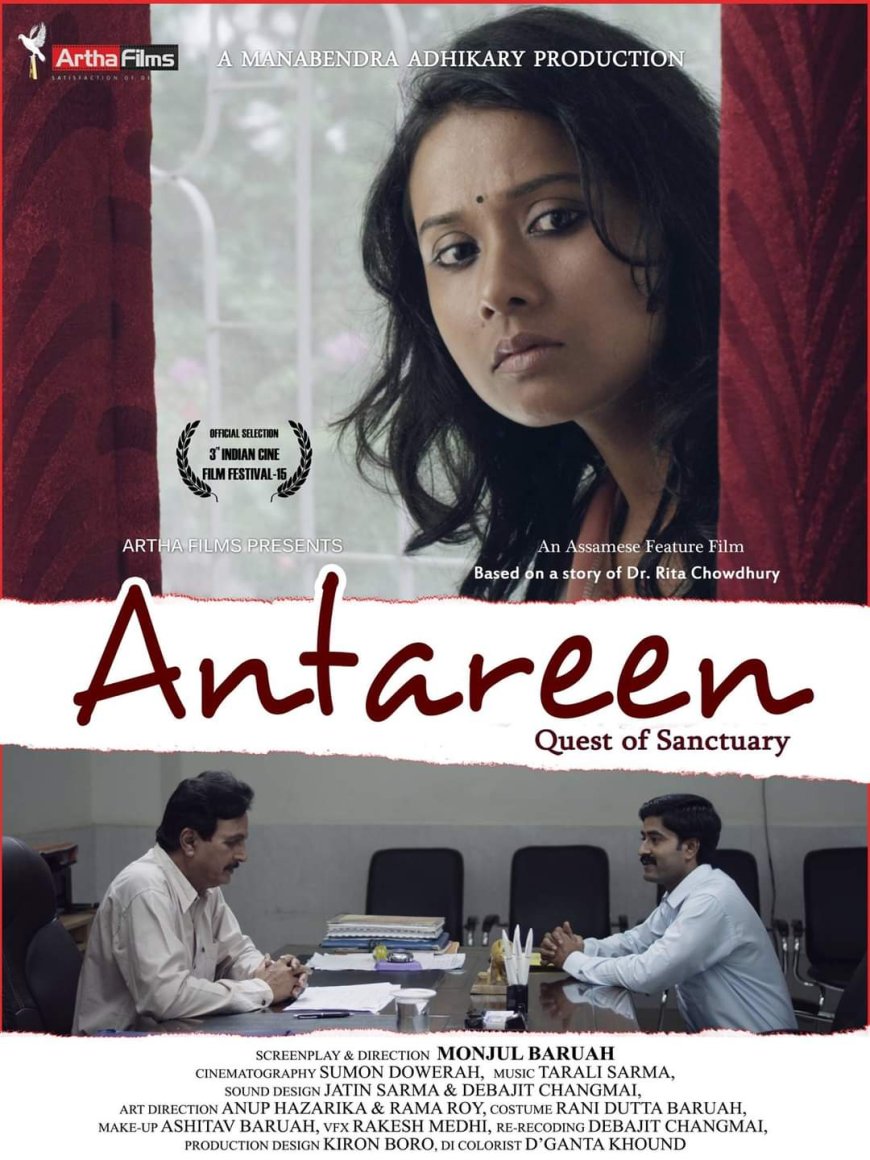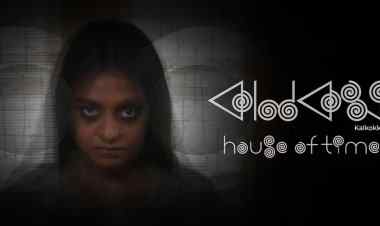When I peeped into Tarali’s world… Antareen, the cinema
Anwesha Kotoky critically reviews Monjul Baruah's featured film "Antareen".
Antareen, it’s a film much more meaningful than most of the blockbuster Bollywood movies. If you watch it in one go, you will keep it in your thoughts at least for the day, unlike some of the movie stories that you immediately forget after exiting the theatre. I was not fortunate enough to watch it in the theatres as I had missed all the screenings because of different prior commitments. But when I got a chance to watch it online a few days back, it stayed with me till date. It made me think. I took time to process the content in my mind. It’s not a ‘one time watch’ as we describe many movies.
Most of Antareen’s posters highlight the female lead’s face giving an indication about her journey that is about to be told. But when I watched it, I felt it’s just not about Tarali, it’s a story about Pradipta Duarah, a family man who happens to be a psychiatrist by profession. It’s about the journey he goes through while making some irreversible mistakes that he couldn’t realise at the right time. To put the logline in one sentence, “Antareen is a story about Dr. Pradipta Duarah who realises his mistake and helplessness after discovering the real story behind Tarali’s illness, a so called patient that he declared to be mad and sent to a mental hospital under political influence.”
The film starts with a fourth grade staff cleaning a corridor with water and mop. Dr. Samiran is about to enter and waits for him to clear the way, unwilling to ruin it with his dirty shoes. When he proceeds, he notices some displacement of the cactus he had kept in the corridor before leaving for Delhi. As he converse with two more fourth grade staff and one colleague, audience already gets an idea about his character: The humble and down to earth personality who likes all forms of Art. Be it joining in a painting exhibition, or the tasteful arrangements of artefacts and tiny plants inside his cabin or the amusement he experiences while observing a wall art inside a patient’s cell.
Antareen is a film adaptation of the story named ‘Tarali’ by ‘Rita Chowdhury’, a renowned Assamese writer. Dr. Chaudhury’s literary works are already appreciated for her beautiful narrative style and the wonderful character graphs. I remember reading ‘Popiya Torar Sadhu’ stealing from my mother’s almirah during my early teenage. Apparently, I was not allowed to read all the books from her library because it didn’t suit my age. But I was not that obedient either. I read that book again after a few years and it felt different. Just a few years ago, in one of her Mumbai visits, my mother referred me another book of Dr. Chowdhury herself, it was ‘Mayabritto’. She gave it to me after finishing it herself. I can not describe how wonderfully this book touched me till the core. I could visualise everything I was reading. I felt like it’s not the protagonist who was standing tall at Chandratal, it was me, I could feel the vibes. I haven’t read the story “Tarali”, but I am convinced that Antareen couldn’t have been better at doing justice to her work. Writing a story is one thing and portraying the story, that too in a non-linear form and presenting it as a cinema is another task that is even tougher. Hats off to Manjul Baruah for managing to make a wonderful film at his very first attempt. When you watch the film, it’s hard to believe that this is actually the debut film of the director. There was no irrelevant scene or dialogue that didn’t contribute or did justice to the script. Every little detail, be it a single dialogue, an ambience prop or the using of silence, everything contributed to the story and kept the viewers attached..
A film becomes a film only by joining shots and scenes. But when the narrative demands a play between the past and present, it becomes very difficult for both the editor and the director to keep the audience engaged. The first 20 minutes of the film is just the introduction of the main characters: Dr. Samiran, Dr. Duarah, Mrs. Duarah and a little hint about Tarali, someone who sends a letter and a painting as a gift to Dr. Duarah, expressing her gratitude for something he had done for her. In these 20 minutes, the director successfully introduces us to the characters depicting their every aspect of life: The personal, The Social, The Professional and also their most Private life. The using of “Set up and Pay Back” in the script is one thing that I really appreciate. There’s a conversation about a particular writer named “Bijan Dutta” that keep going on whenever Dr. Duarah is with his wife. The first time Duarah spots the name is when he finds the book inside his wife’s bag while searching for a hand-towel. Later, His wife Rajita is often seen reading a book named “Nihxongotar Xongo” (Company of the loneliness) and appreciating the writer and his views in front of her husband. At the climax, Dr. Duarah learns that “Bijan Dutta” is actually the Pen Name of “Tarali”, the young woman he declared to be mad under political influence. The irony here is not just about the mental state of Tarali, it’s also about Dr. Duarah’s life. Dr. Duarah who considers himself to be a perfect person, failed to give company to his beloved wife who had to take up reading books as her hobby to past her time, specifically those books that talks about Loneliness and Mental Health. It’s completely natural for Dr. Duarah to get a kick when he discovers that the writer who has been giving company to his wife is actually someone who was declared to be mad by himself. That’s the ‘pay back’ for the ‘set up’ he created while showing the first glimpse of the book inside her bag in the initial minutes of the film. The graph of the film is another strong point of the whole screenplay. It’s exactly the half of the film when Tarali’s world collapses after learning her actual identity. The play of transitions and time lapses was used so beautifully throughout the film. Not everyone is capable of using silence as an element of the sound design. Whenever there’s an intense emotional scene, the designer leaves it totally silent. Be it the conversation of the two when Tarali learns the reality about her bloodline or when she’s crying alone on her pillow. A dramatic change occurs in her sister’s character too, the girl who kept insulting her all her life, takes a stand for Tarali against their father after learning the reality. It was surprising for the viewers too. The soundtrack also goes hand in hand with the script. There was no serious choreography in the film, still the director used the appropriate lines at the correct moments. When Tarali starts bonding with Aakash and his other friends, the song “Ai Aakash” starts playing. It’s a song about the sky, dreams and freedom. There was a specific shot when a train crosses the bridge in distance, it was exactly the time when the lines “Nirovota Fali Hepaahe Sobi Aakise” (Desire paints hope breaking the silence) plays. The song gets overlapped by the sound of train’s whistle, giving another dimension to the ongoing lyrics. Another beautiful song “Rati Aru Kiman Baaki” starts playing when Tarali gets hit and imprisoned by her father. A beautiful morning shot has been added in the scene depicting the arising of the Sun, but unfortunately the Sun didn’t raise for her. It was the time when she realises she has been locked from outside and spends a few days alone. Even after going through so much pain, she gets another shock when she is informed about the unfortunate deaths of her two beloved person: her lover Aakash and her sister Ranima. The transitions used in film were not always visuals, sometimes it was Sound and Art too. During the first half when Dr. Duarah is reminiscing memories of Tarali’s case, his existence in past takes transition through the phone ringing in his desk. He comes back to the present world while he picks his wife’s call. It was another satirical moment that amidst all these deep thoughts, he had to leave for home to meet the carpenter. It shows being a doctor is not just whole of his life, he is a normal family man too who needs to take care of his house and spouse also. The director tells the story so beautifully with different Art works and the growing emotions inside Tarali. The first drawing young Tarali made on the wall was a combination of Balloons, Teddy, Moon, Star and Flowers. But with time and over Tarali’s voice over, the wall art develops with addition of different objects and colours. There was a moving shot when a devastated Tarali is sitting in front of her dressing table and the camera pans through the wall art she made and it comes back to the first frame only to reveal a grownup Tarali getting ready for college. The style of directing this transition of time and communicating it well with such a smooth camera movement is something that I really liked. The shot was based only on Tarali’s narration of her life story that she wrote to Dr. Duarah and it was enough to communicate all the sentiments she was going through all those years.
If we try to look into Tarali’s life, the best way to understand her desire is observing the Wall Arts she made inside her room and inside her cell. While she made her first drawing on her sister’s birthday, the wall gradually gets filled with the new things she kept learnings as she grew. The little drawing of stars and moons develops into kites, butterflies, spirals, family portraits and numbers and finally gives space to new learnings like geometry, symmetry, the golden ratio and wave lengths as the grown up Tarali starts painting on the walls of her cell inside the mental hospital. Tarali’s life is so much relatable to what we call “The Hero’s Journey” in a film graph. She had experienced all types of emotions in a very tender age till her youth. She goes through so much pain and finally when she learns to take a stand for her, that too goes in vain. Her insecurities of being ugly gets replaced when she learns about her actual birth mother, unexpectedly she gains support of her sister only after knowing that they were not real siblings. But to add another pain in her life, she loses the only two persons on whom she could have depended when they get killed in an encounter. Just like a helpless person tries to hold onto everything they find near, Tarali agrees to marry a stranger seeking some sort of sympathy from him. But little did she know that it was all a part of the mind game played by her cruel father who just wanted to shut her mouth in order to protect his political career by declaring her mad. The person who gave her assurance to rescue her from the hell by marrying and giving her a new shelter was the same person who took her to a psychiatrist only to prove her mad and throw her into a mental hospital. The father-daughter relation which Tarali always kept dreaming of never got fulfilled just because she was a bastard child which was not even her fault. But that same biological relation helped Tarali to meet her actual mother on a death bed when her friend introduced her as home minister’s daughter. Tarali and her father kept living under the same roof, they used to have food together every night. Still her father was completely unaware of her painting skills, neither Tarali was aware of his next political move. She learns about her father’s political career only when she reads an article in the highest selling newspaper. That was the level of communication they shared as a family. And finally when she takes a stand for herself and demands her father to give the due recognition to her biological mother, she gets home prisoned by him and later gets married off just to be declared mad. We all know how wonderful Urmila Mahanta is as a skilled actor. But her performance as Tarali is something to be praised from every aspect. Be it the dialogue delivery at the strongest or weakest moment or the utmost emotions she presents after every heart break, she was excellent in everything! The silent moments, the painful cryings and the happiness shown through her eyes when she was standing at the river bank; all of them were even better than the other. She literally carried the film in her shoulder involving the audience through her expressions. The character arc of Tarali was so sharp that the same girl who becomes silent after getting beaten by her husband so many times, finally gains back her confidence to question her corrupt psychiatrist about his opinion on her mental stability.
Al though Tarali was tough enough to struggle in her life herself, it was Dr. Samiran (A junior doctor in the mental hospital) who gave her that extra push she was missing all her life. After losing two dear persons Aakash and Ranima, Samiran came like a blessings in disgust to her life. If she wouldn’t have been sent to the mental hospital, she will never have been able to communicate the inner secrets through writings. A fearful patient with an artistic mind was first spotted by Samiran during one of his regular visits around the cells. Tarali was very afraid of him as she had already lost trust in every human being. But just through a simple method of psychotherapy, Samiran was able to cure Tarali who was declared to be a case of Paranoid Psychosis and Psychoneurosis by the highly certified Dr. Duarah under political influence. Boloram Das as Dr. Samiran was the perfect cast chosen by the director to portray the character. He was able to perfectly portray the humble yet stern personality of Dr. Samiran. A person who has the softest heart to adore even a cactus plant was confident enough to challenge his superior personals with their intentions and medical understandings. As he starts peeping inside Tarali’s world, his eagerness to know her has been shown through his various failed attempts of talking to Dr. Duarah regarding her case,which gets overlooked every time. Samiran tries to convey Duarah that there can be some suppressed perspective regarding Tarali’s case but Dr. Duarah who’s already guilty about his wrong deeds keeps avoiding him to protect his self-esteem. But when Samiran gathers enough proofs to prove Duarah wrong, he leaves no stones unmoved. He wins the arguments by using medical theories and also proves his conclusion by showing the books of Bijan Dutta, who happens to be Tarali’s Pen name apparently. When Duarah confesses that he had to do it because of political influence, Samiran reminded him about the oaths and ethics they had taken before starting their career as professional doctors. All these medical arguments comes to an end when Samiran finally states that “The voice of the heart is softer and more sensitive than medical ethics.” It implies two things at one moment: the soft corner that Samiran had developed for Tarali and also the humanity that was lacking in Dr. Duarah’s character.
Duarah’s personal life goes hand in hand with his professional life as it is shown by the narrative. Still the director very sensitively used few dialogues to show the flaws in his character i. e. When Dr. Duarah talks to the hostel warden of his kids, he mentions that their mother wants to meet the kids once before leaving for thier new address. He shows no interest in meeting them himself, he portrays like it was their mom who was so eager to meet the children. Also, the reason his wife had to take up books as company was his failure to provide her the required time as her spouse. While his insecurities are shown by his wrong judgements about his wife’s favourite book, his disturbed mind has been portrayed through his lonely night hours and the burnt out cigarettes in his hand. Rajita, his sensible wife notices these things and asks about it but the moment he tries to lie about his disturbed state was the exact moment when he burns his hand with the finished cigarette. These precise shots and dialogues makes us go awe when we realise it’s just the first film of the director. The maturity level and the précised detailing in every shot and frame makes it even harder to believe that it’s coming from a debutant director. But the super ignorant character of Dr. Duarah who holds a superiority complex against his juniors, still denies his faults and refuses to surrender. When Duarah loses the argument to Samiran from every aspect, he still doesn’t bend his head and shows his superiority by telling Samiran that he doesn’t have the authority to release a patient. But Samiran’s self-confidence and dignity is much higher than Duarah’s ego and he conveys it delicately by offering his resignation letter. The last frame of the film is a long shot of Dr. Duarah sitting helpless in foreground unable to make his choice between accepting Samiran’s resignation and Tarali’s discharge. While the director chose to leave the frame without any movement, he very cleverly breaks the silence and the emptiness by bringing in some background artist with medical equipment immediately after Samiran’s exit. The staging of this long shot was so unconventional yet so meaningful. It makes us feel eager to know what Dr. Duarah is going to choose between the two options he has been offered.
The little detailing that has been invested to make the film more relatable is another aspect that deserves appreciation. When the shifting journey of Duarah and wife has been shown only through a sound track and Duarah’s expressions, the loaded tempo that enters at the hotel premise immediately after Duarah’s car brings us back to the reality from Duarah’s nostalgic thoughts. The indirect style of narrating these little yet important informations were so tricky that it comes totally surprising. When we observe Tarali walking through the footpath on her way to the college, she accidently drops some sachets of a street paan-shop. As she gets up after picking up those sachets, she notices her father’s photo in a newspaper on a random man’s hands sitting next to the shop. It was only that moment when she realised that her father is joining politics and it’s already in the news. If we look closer, those newspapers were properly designed and printed particularly for this shot. This shows how precisely everyone in his team have worked to make it look more convincing.
While we are talking about such action props, we cannot ignore other action and ambience props that kept coming in frame throughout the film. The old torn school bags that young Tarali and her friends carried, the artefacts that were tastefully kept inside Samiran’s cabin, The tasteless arrangements of random paintings inside Duarah’s house and the untouched bookshelf with lots of books with no indication of anyone ever reading shows how particularly all these setups were designed. The portrait of Bhupen Hazarika and the existence of a music system inside that house gives us a little hint about Rajita’s sensibility but it also contradicts with dis-arranged bookshelf where you can spot the little trophies placed here and there. The excellent Art work in the two walls of Tarali’s room and hospital cell gives us another way to peep into Tarali’s psychological world.
When the Art and Sound played a significant role in telling the story, the well-defined camera work also helped to narrate the story smoothly. The choosing of lenses and frames were totally as per the requirement of the moment. They used tracks to take us in and out of emotions and they used the source lights and the mirrors as part of both setup and lighting. Keeping a mirror inside a setup becomes bit tricky at times as it involves risks of revealing unwanted object or person in the frame. But the DOP used the mirrors so well that it worked as a reflector to brighten the low key lighting of Duarah’s newly shifted bed-room. While mirrors were used to add on the ambience, the using of moonlight effect in the background and the ambience as the front light was seen in a night shot when Duarah is sitting alone in the veranda and his thoughts gets interrupted by Rajita’s entry. The dimed lighting of this shot helped the direct to draw our attention towards the burnt cigarette in Duarah’s hand.
The casting of the film was so apt that no character went un-noticed. Be it the labour man who took Tarali’s biological mother away from the bungalow after giving away her child or the man who helped Tarali to find the old bungalow and her sick mother in death bed. The casting, right from the prime characters to the tertiary ones was completely flawless. They felt like real people, delivered their best acting skills. The designing of the costumes and the different looks also helped to make the characters look more realistic. It was that tiniest changes in costumes that makes the designing so unique. When the man cutting woods was approached by Tarali and her friend, the man was wearing a Baniyan with a Gamcha kept around his neck. Within a few minutes he adds a shirt to his costume and the Gamcha moves to his waist while he walks towards the bungalow guiding Tarali. These little details of everyday lifestyle like putting on a shirt while living the house are the tiniest details that we relate so affectively. The correct using of junior artists is something I really miss in Assamese films. But in Antareen, the situations and setups looked so real with those limited numbers of background actors. All though I didn’t like the junior patients inside the hospital because of their inability to give the required expressions, choosing the number of juniors and their placements were good enough to give us the feel. I feel the crew could have been more précised in taking out the required expression from the juniors too.
The costumes and make up played a very significant part in bringing out the main characters. The choosing of colour and texture and also the ageing of clothes for every character was different from the other. The contrast in the characters was beautifully portrayed with the clothes they wore. While Tarali was seen mostly in neutral colours and old clothes with minimal make-up, her sister Ranima kept wearing the most fashionable clothes with the brightest colours. When Aakash was seen in light shaded shirts and kurtas, Tarali’s brother mostly wore sweat pants and bright tee-shirts. Tarali’s second look as a married woman was so beautiful that it’s hard to remember that it’s the same girl who used to be insecure about her skin colour and the way she looked. The dirty old clothes of the labourers and the everyday clothes of Tarali let us know the understanding of ageing of the costume team, they were very particular with the tertiary characters too. Even in make-up, the college going look, the morning face, and the sleep deprived tired face of Tarali shows us how important part the make-up team plays in telling a story, which often gets overlooked by the viewers. When Tarali falls down on the floor as a result of the argument with her father, she hits her head. When she gets up with her sister’s help, the blood drops falling from the scar is completely fresh which keeps getting thicker as she walks towards her room. When Ranima, the sister cleans the injury, we can see how deep the scar is with changing blood colour and growing thickness. When the Sun rises and Tarali proceeds to open her room door, the scar gets dried up but it’s still noticeable… When you create a scar with make-up, it’s not very easy to maintain the continuity correctly, because it keeps changing with every scene and sometimes you might not even shoot it in the same day. But the ageing of this scar went parallel with the script days as it progressed.
After noticing every detail of Antareen, it makes me feel really amused that it’s the first feature of Manjul Baruah. The perfection from every aspect signifies how good his whole team have been with their respective departments. It was a play of sound and visuals that was delivered best by the DOP and the duo of Debajit Changmai and Jatin Sarma. The beautiful songs that took the story forward is something I still keep playing. Tarali Sharma put the right ingredients while cooking the beautiful music for this wonderful story. And while everyone is talking about the relevance of mental health these days, I feel this film already took a step forward three years back. We have observed mental health issues in some earlier Assamese films too, but nobody was able to address it correctly like Mr. Baruah did through this film. It’s a film that everyone should watch and appreciate as I feel it deserves more recognition than it received at the time of release. We, the people ignore the tiniest disturbances in a person’s mind when he goes through a dilemma. But when it keeps getting piled up with time and gets unbearable, we declare them to be mad rather than trying to understand the issues and taking proper treatment. While addressing a mental health problem, Manjul Baruah successfully revealed the influence of politics, corruption and human relationships equally in our everyday life. Al though Tarali has been portrayed as a Hero who overcomes her sufferings and blooms where she’s planted, we can relate to her life struggle because somewhere we all go through similar problems in our lives. Antareen is like a mirror to today’s society and different lifestyles we follow. It feels like a story of Bhabendranath Saikia which everyone can relate in some way or other. I look forward to watch more films from this outstanding film maker. Thank you Manjul Baruah for contributing a wonderful cinema to our Assamese Film Industry. With releasing of such good cinemas, I hope our Assamese Film Industry will get back its lost glory in a very short span of time.
What's Your Reaction?









































